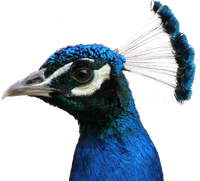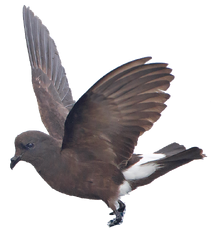mNo edit summary |
mNo edit summary Tag: sourceedit |
||
| (2 intermediate revisions by the same user not shown) | |||
| Line 1: | Line 1: | ||
| + | {{speciesbox |
||
| − | {{Taxobox |
||
| ⚫ | |||
| name = Wandering Albatross |
| name = Wandering Albatross |
||
| status = VU | status_system = IUCN3.1 |
| status = VU | status_system = IUCN3.1 |
||
| status_ref = <ref name="IUCN">{{IUCN2008|assessors=BirdLife International|year=2008|id=144899|title=Diomedea exulans|downloaded=17 Feb 2009}}</ref> |
| status_ref = <ref name="IUCN">{{IUCN2008|assessors=BirdLife International|year=2008|id=144899|title=Diomedea exulans|downloaded=17 Feb 2009}}</ref> |
||
| trend = down |
| trend = down |
||
| − | | image = Diomedea exulans - SE Tasmania. |
+ | | image = Diomedea exulans - SE Tasmania.png |
| + | | image_width = 300px |
||
| − | | regnum = [[Animal]]ia |
||
| − | | phylum = [[Chordate|Chordata]] |
||
| − | | classis = [[bird|Aves]] |
||
| − | | ordo = [[Procellariiformes]] |
||
| − | | familia = [[Diomedeidae]] |
||
| ⚫ | |||
| − | | species = '''''D. exulans''''' |
||
| binomial = ''Diomedea exulans'' |
| binomial = ''Diomedea exulans'' |
||
| binomial_authority = [[Carl Linnaeus|Linnaeus]], [[10th edition of Systema Naturae|1758]]<ref name="Brand, S. 2008">{{cite web| url=http://www.taxonomy.nl/Main/Classification/101869.htm| title=Systema Naturae 2000 / Classification - Diomedea subg. Diomedea - | accessdate=12 Feb 2009 |last=Brands | first=Sheila | authorlink= | date=Aug 14 2008 | work=Project: The Taxonomicon }}</ref> |
| binomial_authority = [[Carl Linnaeus|Linnaeus]], [[10th edition of Systema Naturae|1758]]<ref name="Brand, S. 2008">{{cite web| url=http://www.taxonomy.nl/Main/Classification/101869.htm| title=Systema Naturae 2000 / Classification - Diomedea subg. Diomedea - | accessdate=12 Feb 2009 |last=Brands | first=Sheila | authorlink= | date=Aug 14 2008 | work=Project: The Taxonomicon }}</ref> |
||
| − | | subdivision_ranks = |
+ | | subdivision_ranks = Subspecies |
| subdivision = ''Diomedea exulans exulans''<small>([[Carolus Linnaeus|Linnaeus]], 1758)<ref name="Brand, S. 2008"/></small><br> |
| subdivision = ''Diomedea exulans exulans''<small>([[Carolus Linnaeus|Linnaeus]], 1758)<ref name="Brand, S. 2008"/></small><br> |
||
''Diomedea exulans gibsoni'' |
''Diomedea exulans gibsoni'' |
||
| Line 23: | Line 18: | ||
==Other names== |
==Other names== |
||
| − | Gony (as in immature, mottle plumage), or "leopard gony"; Cape sheep{{Encyclopedia}} |
+ | Gony (as in immature, mottle plumage), or "leopard gony"; Cape sheep{{Encyclopedia}}. |
| + | |||
==Description== |
==Description== |
||
===Similar species=== |
===Similar species=== |
||
==Behaviour== |
==Behaviour== |
||
| + | |||
| + | The Wandering Albatross can scent odour trails up to 12 miles away<ref name="BirdsCanSmell">{{cite web| url=http://mag.audubon.org/articles/birds/birds-can-smell-and-one-scientist-leading-charge-prove-it?page=3| title=Birds Can Smell, and One Scientist is Leading the Charge to Prove It - | accessdate=1 Feb 2014 |last=Averett | first=Nancy | authorlink= | date=January-February 2014 | work=Audubon Magazine }}</ref>. |
||
| + | |||
===Diet=== |
===Diet=== |
||
===Calls=== |
===Calls=== |
||
| Line 49: | Line 48: | ||
[[Category:Species named after adjectives]] |
[[Category:Species named after adjectives]] |
||
[[Category:Birds: W]] |
[[Category:Birds: W]] |
||
| + | [[Category:Birds of Devonshire]] |
||
Latest revision as of 03:06, 29 April 2017
| Wandering Albatross | |
|---|---|
| File:Diomedea exulans - SE Tasmania.png | |
| Scientific classification | |
| Kingdom: | Animalia |
| Phylum: | Chordata |
| Class: | Aves |
| Clade: | Aequorlitornithes |
| Clade: | Ardeae |
| Clade: | Aequornithes |
| Clade: | Austrodyptornithes |
| Order: | Procellariiformes |
| Family: | Diomedeidae |
| Genus: | Diomedea |
| Species: | D. exulans |
| Binomial name | |
| Diomedea exulans Linnaeus, 1758[2] | |
| Subspecies | |
|
Diomedea exulans exulans(Linnaeus, 1758)[2] | |
In flight
The Wandering Albatross, Snowy Albatross or White-winged Albatross,[3] Diomedea exulans, is a large seabird from the family Diomedeidae, which has a circumpolar range in the Southern Ocean. It was the first species of albatross to be described, and was long considered the same species as the Tristan Albatross and the Antipodean Albatross. In fact, a few authors still consider them all subspecies of the same species.[4] The SACC has a proposal on the table to split this species,[5] and BirdLife International has already split it. Together with the Amsterdam Albatross it forms the Wandering Albatross species complex. The Wandering Albatross is the largest member of the genus Diomedea (the great albatrosses), one of the largest birds in the world, and one of the best known and studied species of bird in the world.
Other names
Gony (as in immature, mottle plumage), or "leopard gony"; Cape sheep[6].
Description
Similar species
Behaviour
The Wandering Albatross can scent odour trails up to 12 miles away[7].
Diet
Calls
Reproduction
Distribution/habitat
References
- ^ BirdLife International (2008). Diomedea exulans. In: IUCN 2008. IUCN Red List of Threatened Species. Downloaded on 17 Feb 2009.
- ^ a b Brands, Sheila (Aug 14 2008). "Systema Naturae 2000 / Classification - Diomedea subg. Diomedea -". Project: The Taxonomicon. Retrieved 12 Feb 2009. Check date values in:
|date=(help) - ^ Robertson, C. J. R. (2003). "Albatrosses (Diomedeidae)". In Hutchins, Michael. Grzimek's Animal Life Encyclopedia. 8 Birds I Tinamous and Ratites to Hoatzins (2 ed.). Farmington Hills, MI: Gale Group. pp. 113–116, 118–119. ISBN 0-7876-5784-0.
- ^ Clements, James (2007). The Clements Checklist of the Birds of the World (6 ed.). Ithaca, NY: Cornell University Press. ISBN 978-0-8014-4501-9.
- ^ Remsen Jr., J. V.; et al. (30 Jan 2009). "Proposal (388) to South American Classification Committee: Split Diomedea exulans into four species". South American Classification Committee. American Ornithologists' Union. Retrieved 17 Feb 2009. Cite uses deprecated parameter
|coauthors=(help) - ^ Terres, John K. (1980). The Audubon Society Encyclopedia of North American Birds. Alfred A. Knopf, Inc. ISBN 0394466519.
- ^ Averett, Nancy (January–February 2014). "Birds Can Smell, and One Scientist is Leading the Charge to Prove It -". Audubon Magazine. Retrieved 1 Feb 2014.
External links
| Projects | ||||||
|---|---|---|---|---|---|---|
| ||||||




